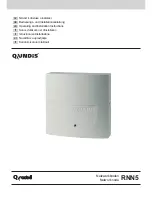
18-3
Cisco ME 3800X and 3600X Switch Software Configuration Guide
OL-23400-01
Chapter 18 Configuring IGMP Snooping
Understanding IGMP Snooping
Joining a Multicast Group
When a host connected to the switch wants to join an IP multicast group and it is an IGMP Version 2
client, it sends an unsolicited IGMP join message, specifying the IP multicast group to join.
Alternatively, when the switch receives a general query from the router, it forwards the query to all ports
in the VLAN. IGMP Version 1 or Version 2 hosts wanting to join the multicast group respond by sending
a join message to the switch. The switch CPU creates a multicast forwarding-table entry for the group if
it is not already present. The CPU also adds the interface where the join message was received to the
forwarding-table entry. The host associated with that interface receives multicast traffic for that
multicast group. See
Figure 18-1
.
Figure 18-1
Initial IGMP Join Message
Router A sends a general query to the switch, which forwards the query to ports 2 through 5, which are
all members of the same VLAN. Host 1 wants to join multicast group 224.1.2.3 and multicasts an IGMP
membership report (IGMP join message) to the group. The switch CPU uses the information in the IGMP
report to set up a forwarding-table entry, as shown in
Table 18-1
, that includes the port numbers
connected to Host 1 and the router.
The switch hardware can distinguish IGMP information packets from other packets for the multicast
group. The information in the table tells the switching engine to send frames addressed to the 224.1.2.3
multicast IP address that are not IGMP packets to the router and to the host that has joined the group.
Forwarding
table
CPU
Host 1
Host 2
Host 3
Host 4
Router A
IGMP report 224.1.2.3
VLAN
PFC
1
0
2
3
4
5
45750
Table 18-1
IGMP Snooping Forwarding Table
Destination Address
Type of Packet
Ports
224.1.2.3
IGMP
1, 2
















































